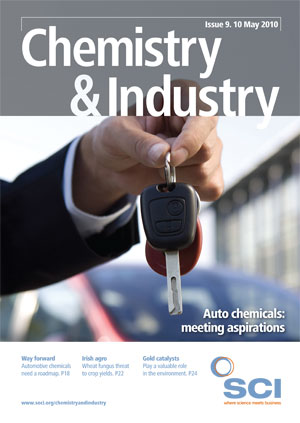The global pharmaceutical market will grow by almost $300bn over the next five years to reach $1.1tr in 2014, according to estimates in the latest IMS Health Prognosis. The 5–8% compound annual growth rate over this period is said to reflect the impact of leading products losing patent protection in developed markets, as well as strong overall growth in the world’s emerging economies.
In line with this prediction, IMS says 2010 will see global pharma sales growth of 4–6%, compared with the 7% recorded in 2009 and 4.8% in 2008. Actual Q1 2010 sales figures generally increased, but with varying degrees of success. The world’s largest pharmaceutical major Pfizer reported Q1 revenues of $16.8bn, up 54%, compared with Q1 2009. Its biopharmaceuticals business, which includes the primary and speciality care, established products, emerging markets and oncology units, saw a 44% increase to $14.5bn, however, its diversified business, which includes animal health, consumer healthcare, nutrition and its Capsugel business, increased by 210% to $2.1bn.
World number two Novartis recorded a 25% increase in its Q1 sales to reach $12.1bn, with recently launched products contributing 16%, or $1.9bn, to the total. Sales of H1N1 flu vaccine contributed $1.1bn, while pharmaceutical sales grew 7% to $7.3bn with growth in all regions. Currency movements contributed 7% of reported growth.
France’s sanofi-aventis reported Q1 sales up 5.8% at constant exchange rates, 3.9% on a reported basis, at €7.4bn, despite the impact of generic competition in the US and Europe, with an 18.1% sales increase, excluding H1N1 vaccine, in emerging markets. Overall pharmaceutical sales grew 0.9% to €6.4bn.
In the UK, GlaxoSmithKline saw its Q1 sales rise 13% to £7.4bn, including a 14% rise in pharmaceutical sales to £6.1bn, with 43% growth in emerging markets and 45% growth in Asia-Pacific/Japan. At AstraZeneca, Q1 revenues increased 7%, at constant exchange rates, to $8.6bn, with revenue increasing 19% in emerging markets.
Swiss major Roche saw group sales rise 9% to CHF12.2bn, with pharmaceutical sales up 6% at CHF9.7bn, due to strong growth in international sales, outside Western Europe and the US. Sales in Western Europe and the US grew by between 2 and 3%.
Back in the US, Johnson & Johnson reported a 4% increase in Q1 sales to reach $15.6bn, although domestic sales declined 5%, compared with a 14.4% increase in international sales. Merck & Co saw its worldwide sales reach $11.4bn, up from $5.3bn, or $10.7bn, when Schering-Plough’s Q1 2009 figures are incorporated. Eli Lilly’s Q1 total revenue grew 9% to $5.5bn, however, operating income fell 7% due to the increased cost of sales.
Abbott recorded a 14.6% increase in worldwide sales to reach $7.7bn, including a favourable 4.1% effects of exchange rates, with pharmaceuticals sales up 12.9%, including a positive 4.4% currency effect, at $4.1bn. Sales at Bristol- Myers Squibb rose 11% to $4.8bn, with similar growth in the US, as well as internationally.
In Germany, Bayer HealthCare sales rose by 0.7% to €3.9bn, out of total sales for the Bayer group of €8.4bn, up 5.3%, compared with Q1 2009, while Boehringer Ingelheim reported its full year 2009 sales up by 9.7% to €12.7bn, the tenth year of growth above the global market. Boehringer claims it was the fastest growing of the world’s 15 top pharma majors in 2009. Merck reported a 13% increase in total revenues to €2.1bn, due to a 6.5% rise in total pharma sales to €1.5bn.





